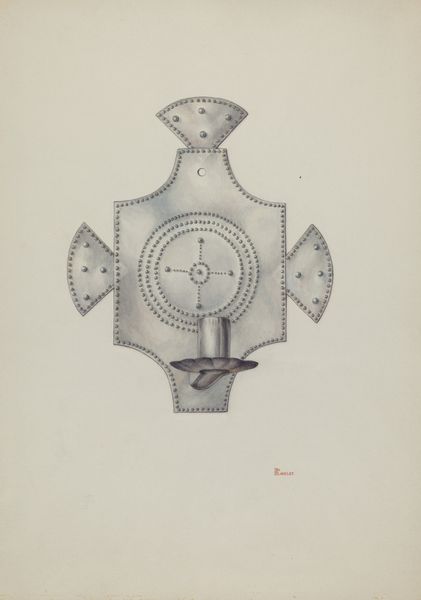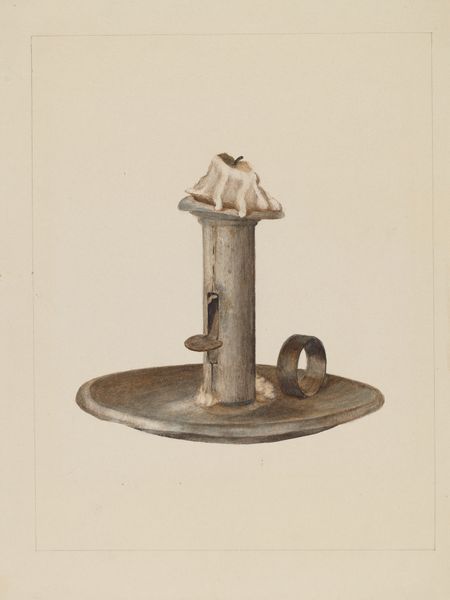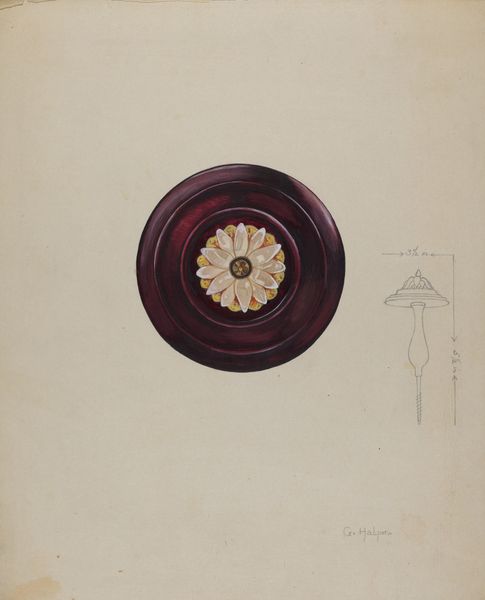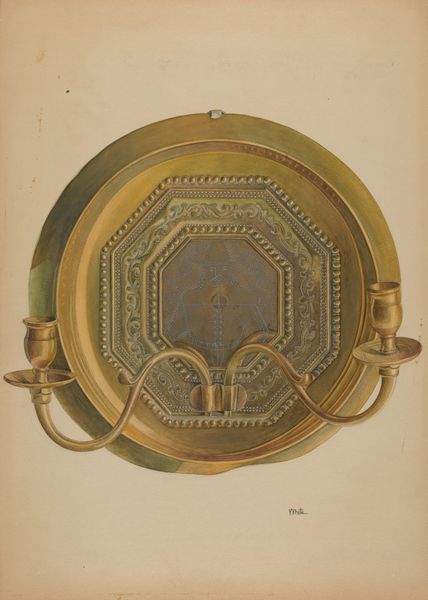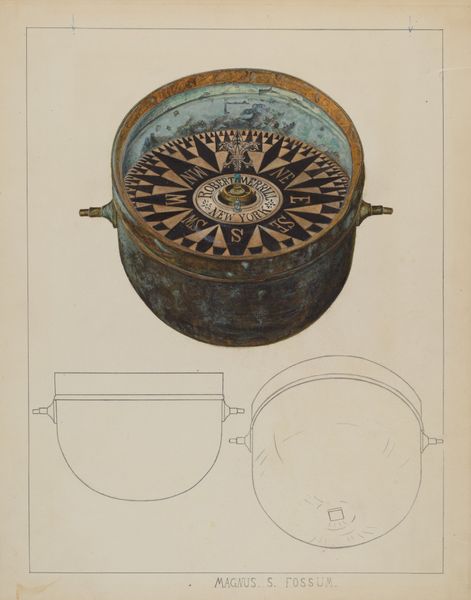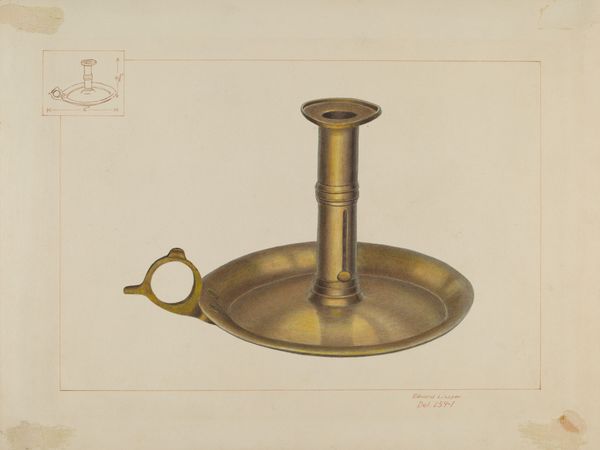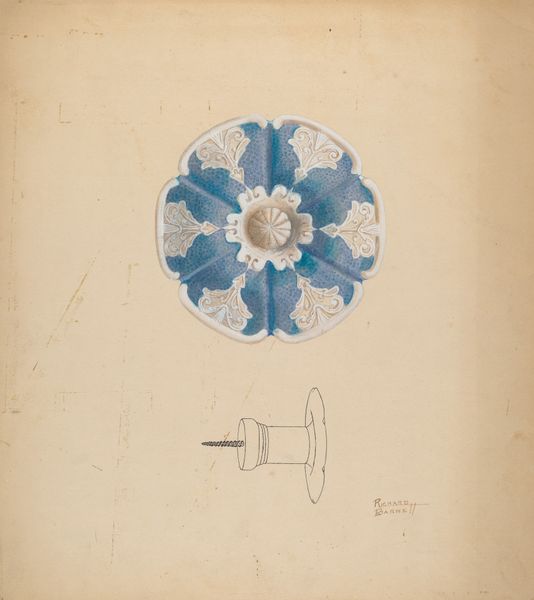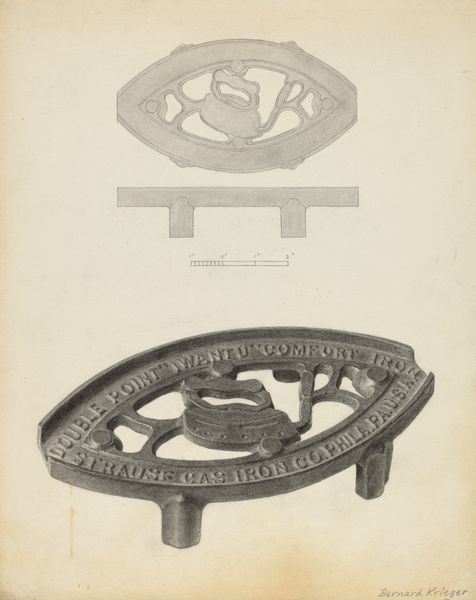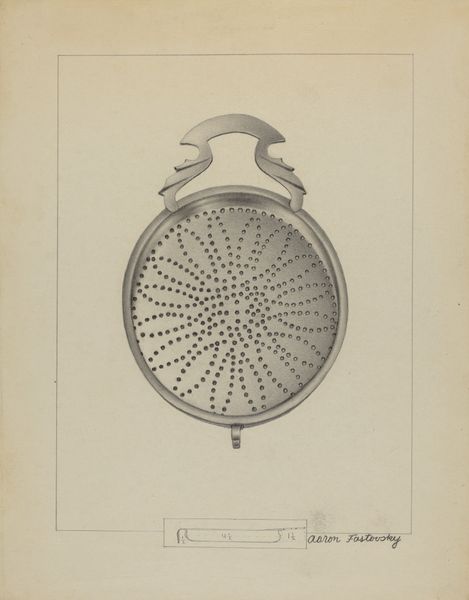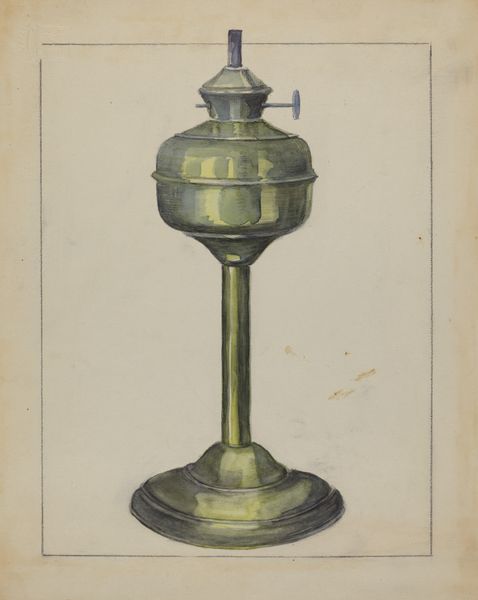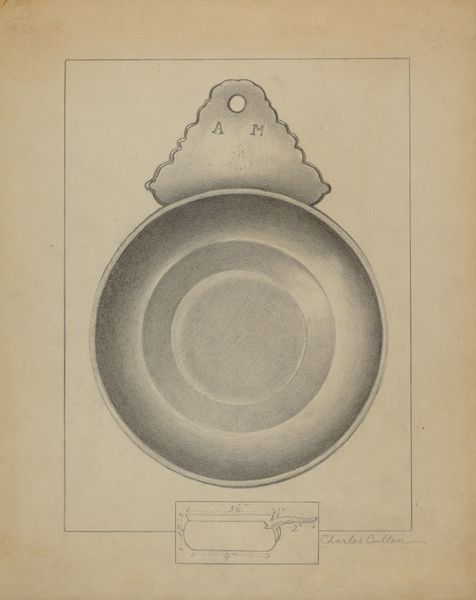
drawing, watercolor
#
drawing
#
sculpture
#
watercolor
#
watercolor
Dimensions: overall: 35.6 x 29 cm (14 x 11 7/16 in.)
Copyright: National Gallery of Art: CC0 1.0
Editor: Here we have Franklyn Syres's "Tin Candle Sconce," created around 1940. It looks like it's rendered in watercolor, and it captures the cool metallic surface quite well. I'm struck by how mundane the subject is, elevated through careful depiction. What jumps out to you? Curator: I find myself immediately drawn to the material transformation happening here. We see a functional object, likely mass-produced from cheap tin, rendered through the supposedly elevated medium of watercolor. This raises questions about artistic labor, doesn't it? Why choose to represent such an object? Editor: It's almost as if the artist is giving dignity to the everyday... to the product of industrial labor. Curator: Precisely! And consider the context. 1940… mass production was booming. What does it mean to isolate and meticulously render a single, humble sconce at this moment? It pushes us to think about the relationship between handcrafted artistry and machine-made goods, perhaps even critiquing the pervasive consumer culture of the time. Editor: So, you’re suggesting the artist is making a statement about value – what we choose to value and how we assign that value through the artistic process? Curator: Exactly! By elevating the 'lowly' sconce through skillful watercolor, Syres might be commenting on the inherent value within everyday objects and questioning the artificial hierarchy between art and craft. What did making art *mean* then, in terms of cultural production and status? Was he paid well? How was the art sold and consumed? These questions point us toward deeper meaning. Editor: That’s a really insightful perspective. I was focusing on the simple beauty, but you've really highlighted the social and economic dimensions embedded within the artwork. Curator: Sometimes the most profound statements are hidden in the seemingly ordinary, aren't they?
Comments
No comments
Be the first to comment and join the conversation on the ultimate creative platform.
